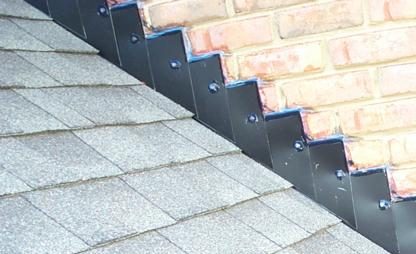Flashing might not be the most glamorous aspect of roofing, but it plays a crucial role in protecting your home from water damage. Often overlooked, flashing is a vital component of any roof, providing a barrier against water infiltration at vulnerable points such as roof intersections, valleys, chimneys, and skylights. In this article, we’ll delve into the importance of proper flashing installation and its role in leak prevention.
What is Flashing?
Flashing is a thin, weather-resistant material installed around roof penetrations, junctions, and transitions to prevent water from seeping into the building envelope. It is typically made of metal, such as aluminum, copper, or galvanized steel, although modern roofing systems may also utilize synthetic materials like PVC or rubber.
The Role of Flashing in Leak Prevention
Water is the primary enemy of roofs, capable of causing extensive damage to the structure, insulation, and interior finishes of a home. Flashing acts as a barrier, directing water away from vulnerable areas and preventing leaks. Without proper flashing, water can infiltrate the roof system, leading to mold growth, rot, and structural deterioration.
Common Flashing Locations
- Chimneys: Chimneys are notorious leak points due to their intersection with the roof. Proper chimney flashing consists of metal strips installed at the base and along the sides of the chimney, overlapped with shingles to create a watertight seal.
- Valleys: Valleys, where two roof slopes meet, are susceptible to water accumulation and runoff. Valley flashing, typically made of metal or synthetic materials, is installed beneath the shingles to channel water away from the roof’s interior.
- Skylights: Skylights provide natural light and ventilation but can also be entry points for water if not properly flashed. Flashing kits specifically designed for skylights ensure a watertight seal around the window frame.
- Roof Penetrations: Vent pipes, exhaust fans, and other roof penetrations require specialized flashing to prevent water intrusion. Pipe boots, made of flexible materials like neoprene or EPDM, form a tight seal around vent pipes to keep out moisture.
Importance of Professional Installation
Proper flashing installation requires precision and attention to detail. Improperly installed flashing can compromise the integrity of the roof and increase the risk of leaks. Hiring a qualified roofing contractor with experience in flashing installation is essential to ensure the job is done correctly.
Maintenance and Inspection
Regular roof maintenance and inspections are critical for identifying flashing issues before they escalate into leaks. Inspect flashing annually for signs of wear, damage, or deterioration, and replace any damaged flashing promptly to prevent water intrusion.
Flashing may be hidden from view, but its importance in maintaining a watertight roof cannot be overstated. Properly installed flashing acts as a barrier against water infiltration, protecting your home from costly water damage and preserving its structural integrity. By understanding the role of flashing and investing in professional installation and maintenance, homeowners can enjoy peace of mind knowing their roofs are well-protected against the elements.
Atlanta Roofing Specialists is a full service residential and commercial roofing contractor serving Metro Atlanta Georgia since 1993. Call (770) 419-2222 to schedule your roof inspection today!

